Marià Castelló's five volume house is inspired by the island culture of Ibiza
With a design guided by the landscape itself, this new holiday house in the Ibizan countryside is a serene and breathable retreat immersed in nature and connected to the land

A house of five volumes designed by architect Marià Castelló has found its place in the terraced landscape of the San Mateo plain on the island of Ibiza.
The dramatic topography, where terraces of stone walls once defined for agriculture have been overtaken with pine and juniper forests, guided the design of the holiday house. It sits between two existing dry stone walls on a flat piece of land bordered by rugged nature, and it was a respect for the natural environment that drove the distinct plan of the house.
Architect Castelló, who founded his practice in 2002 in Formentera, has always been inspired by the landscapes of the Pitiüsas islands. As a result, his architectural work has developed a strong presence of serenity, harmony and precision, reflecting the character of the island culture.
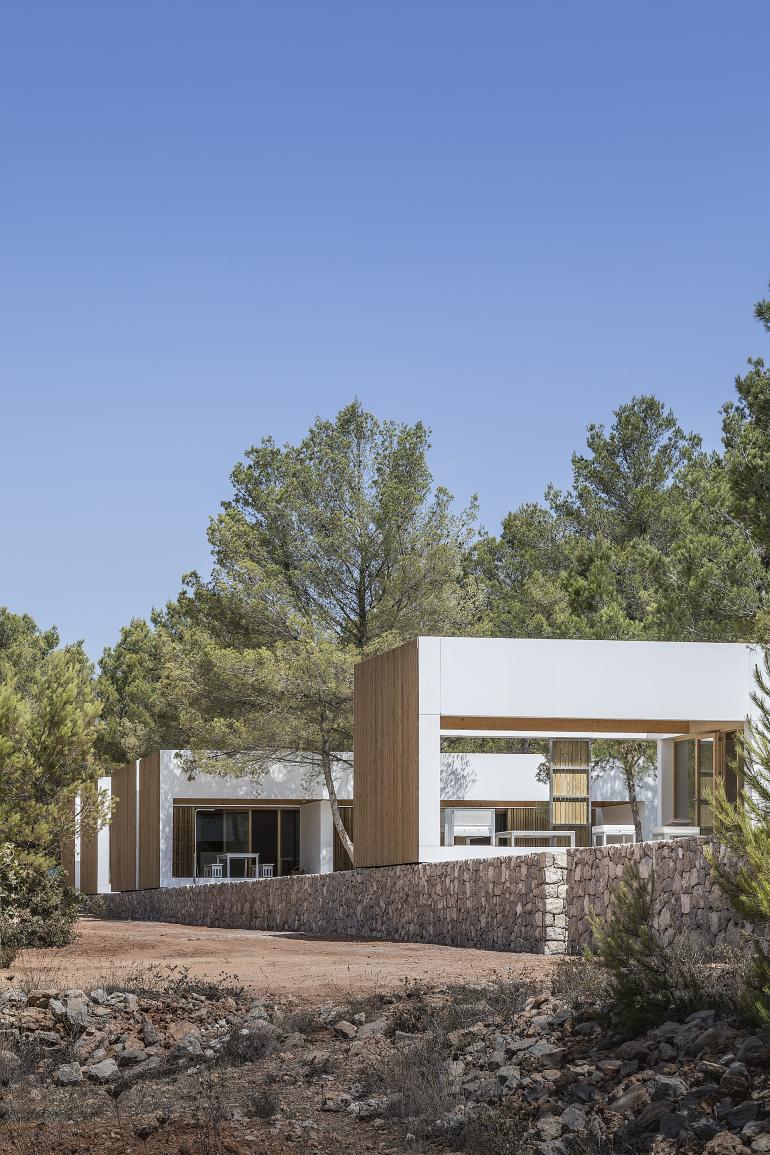
This house, named Ca l'Amo, is formed of five floating volumes. The open space that weaves between them allows for movement, ventilation and connects inhabitants to the natural environment. The first three volumes of the series hold a large family living space. A pool sits between the fourth volume, an open yet shaded outdoor space, and the fifth which houses a guest annex.
Open plan space for social activity inside is furnished with custom-designed furniture, the Xamena sofa by Jose Gandia Blasco and Ramón Esteve for Gandía Blasco, and pieces from the D12 Collection designed by Castelló and Lorena Ruzafa.
The construction reflects the same openness of the living spaces. Materials such as the structural cross-laminated timber inside, and the exposed facade panels of thermo-treated wood outside express sincerity of form. While limestone terraces and paths connect the volumes through the landscape.
Like an island itself, the house is designed to be self-sufficient. While natural ventilation is enhanced by the design and construction, the house also takes advantage of the natural cooling of shade and vegetation. Plus a rainwater cistern that stores 200 tonnes of water.
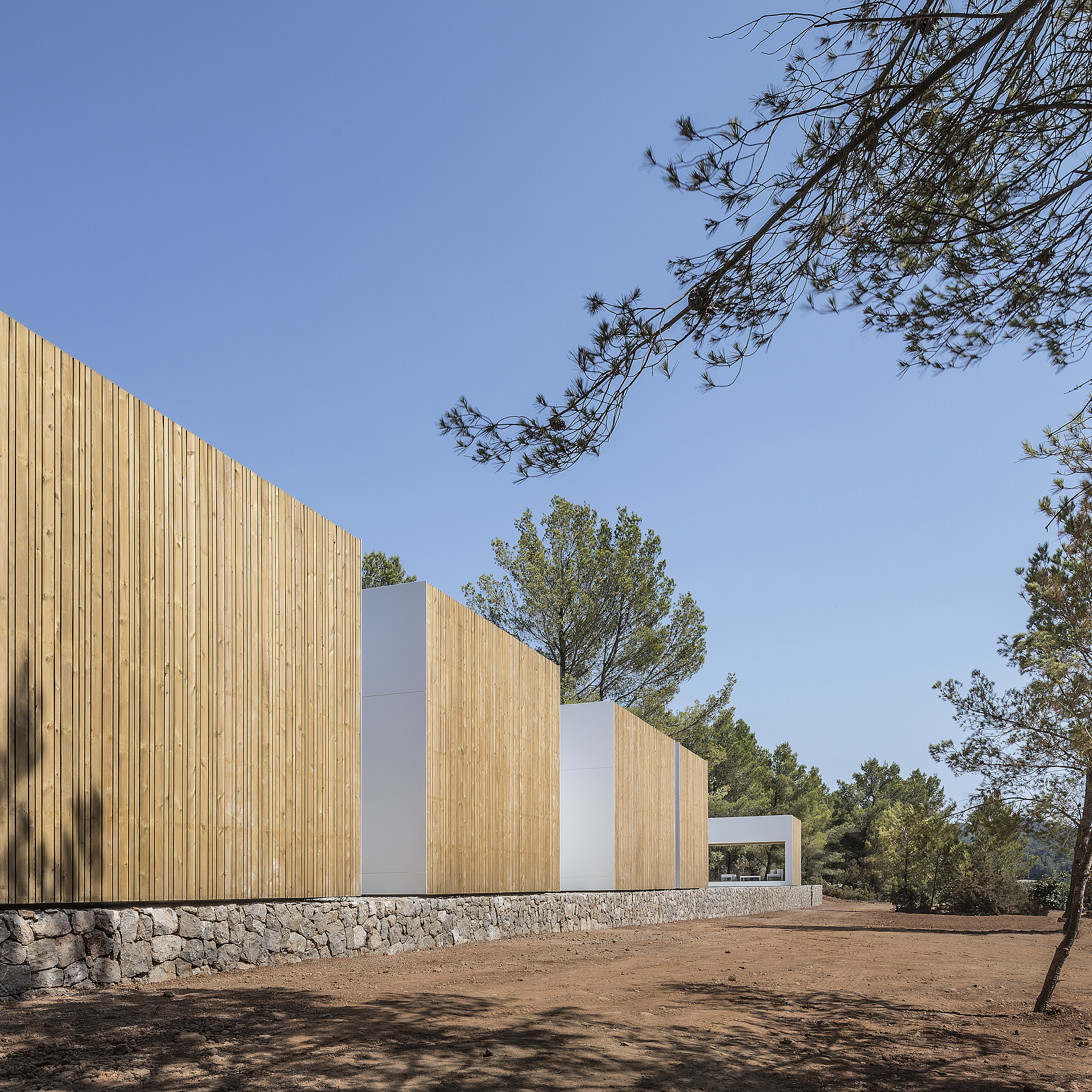
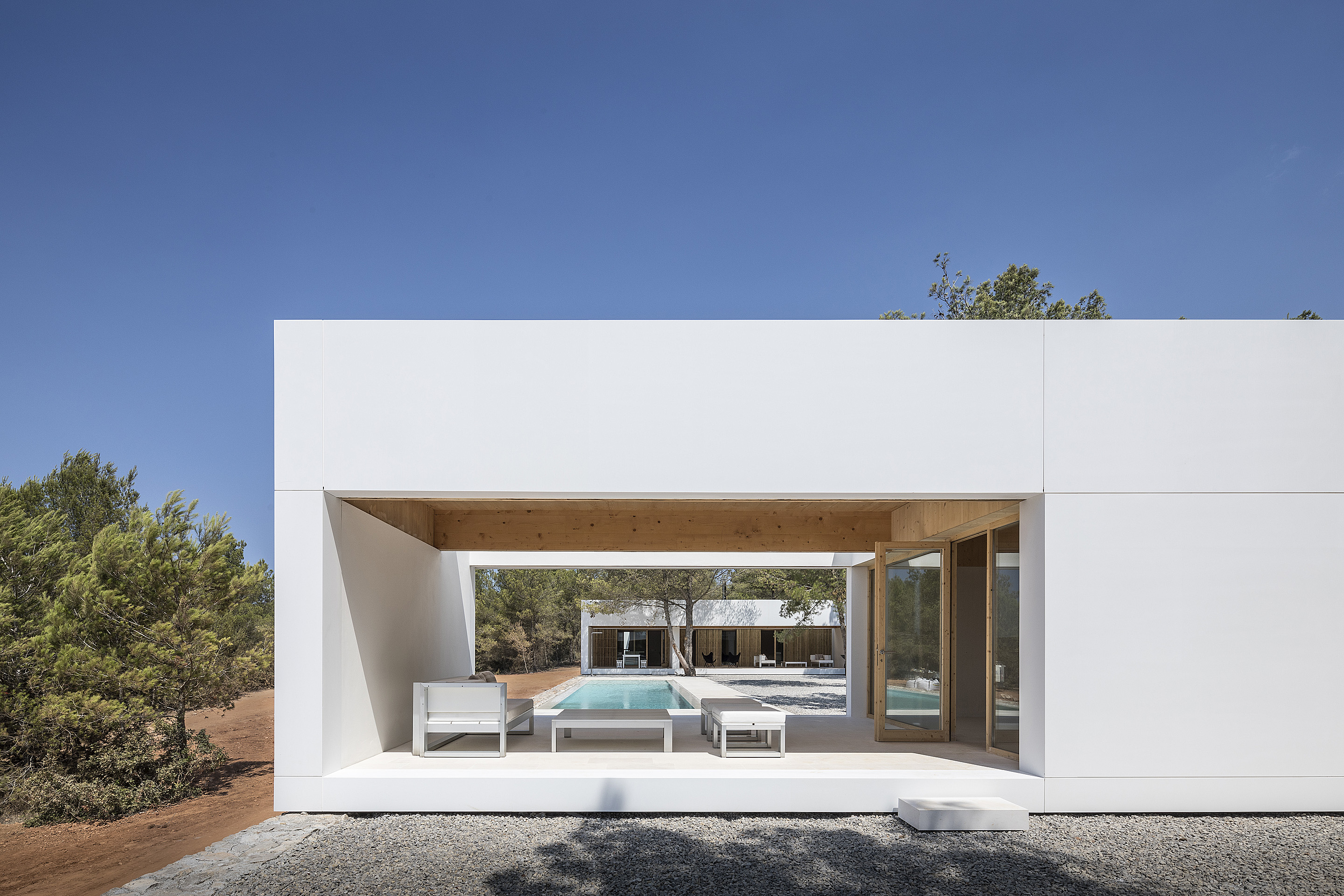

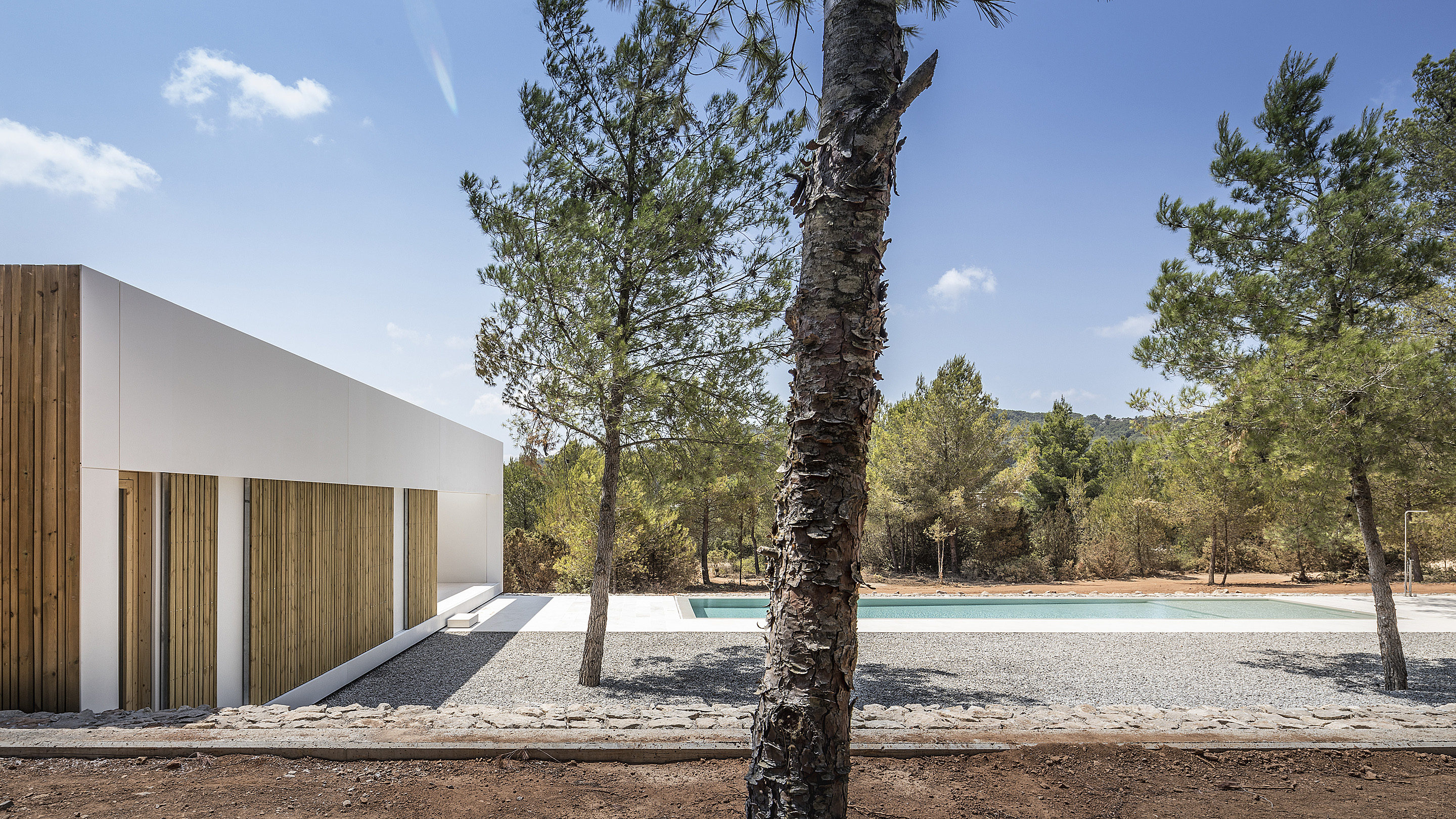
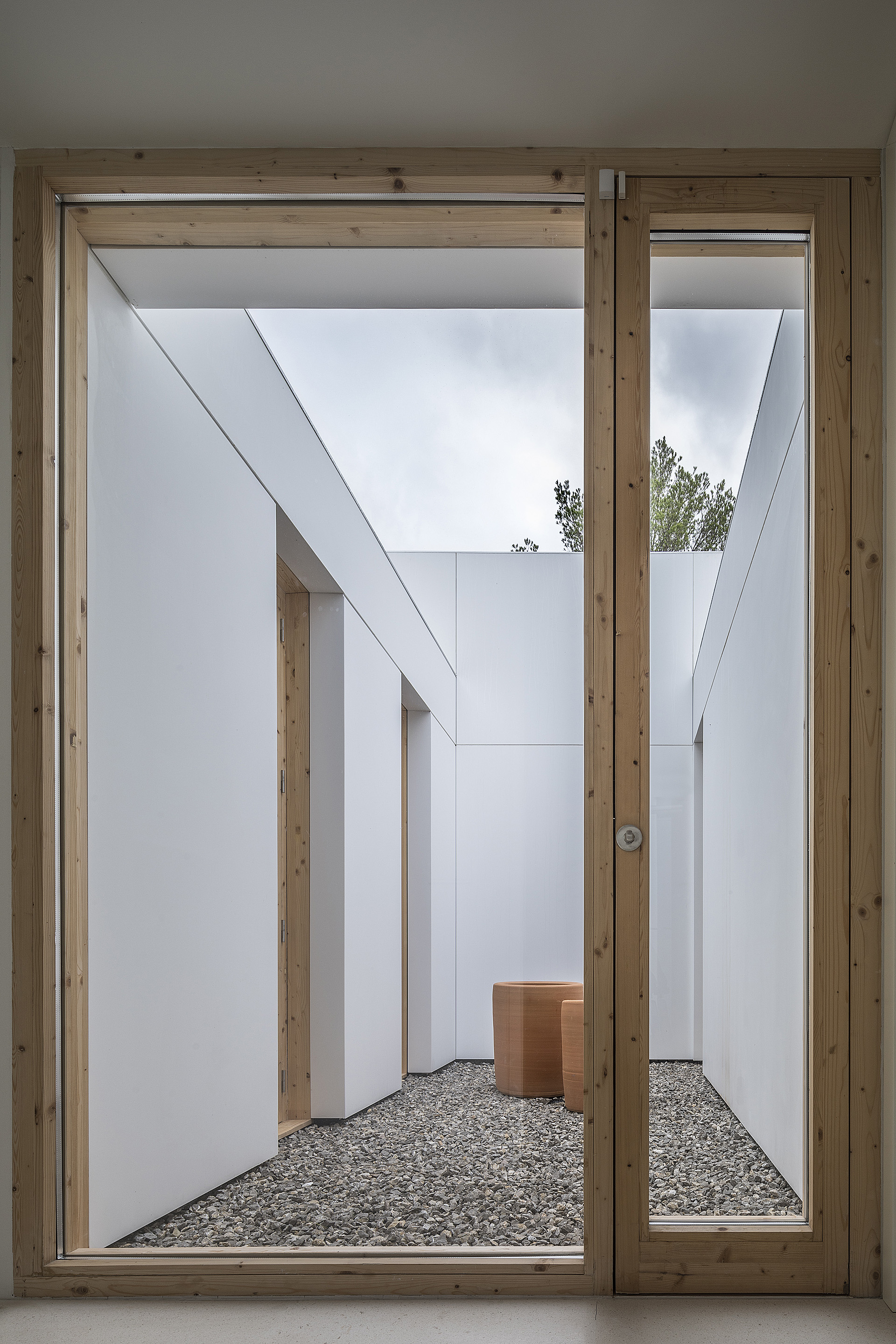
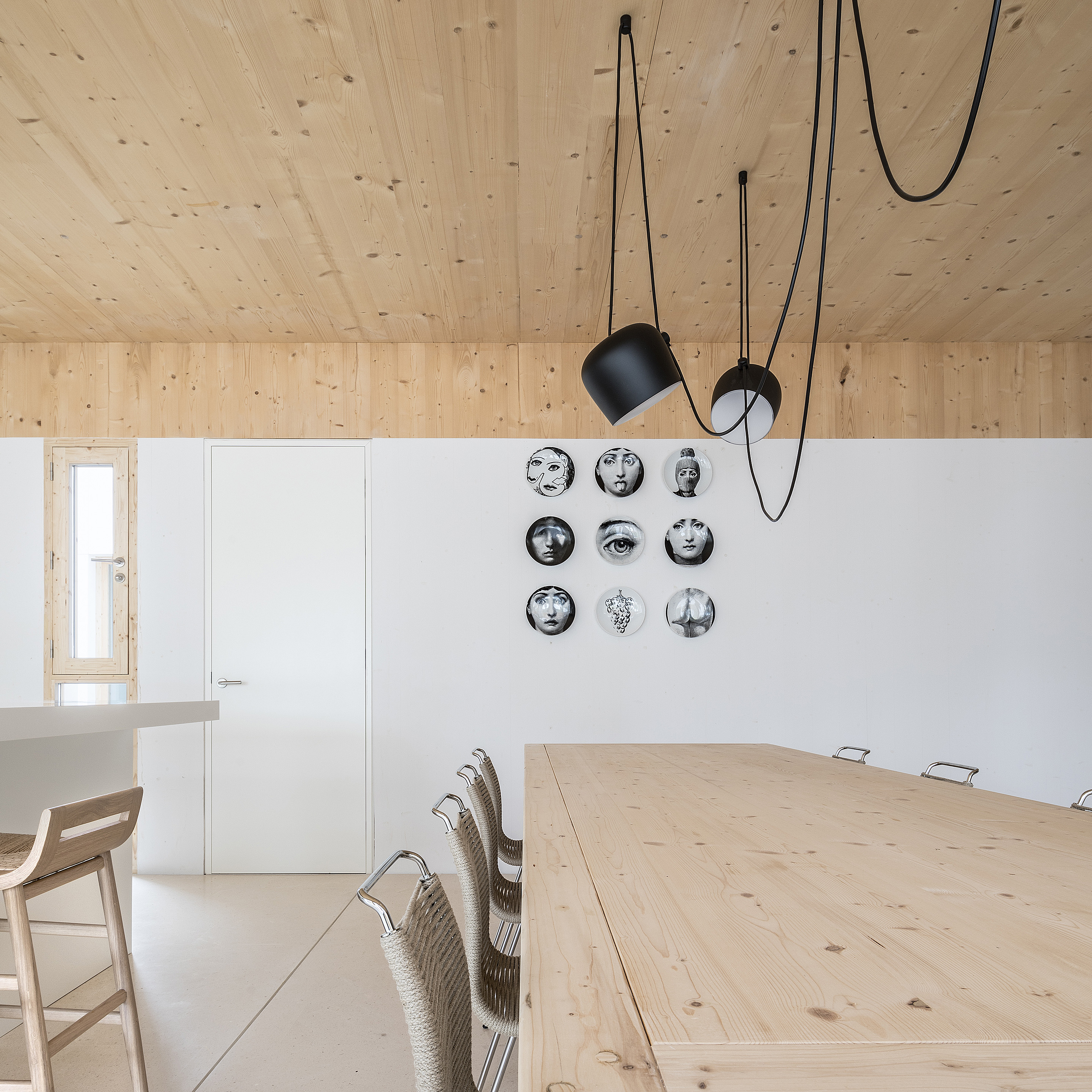
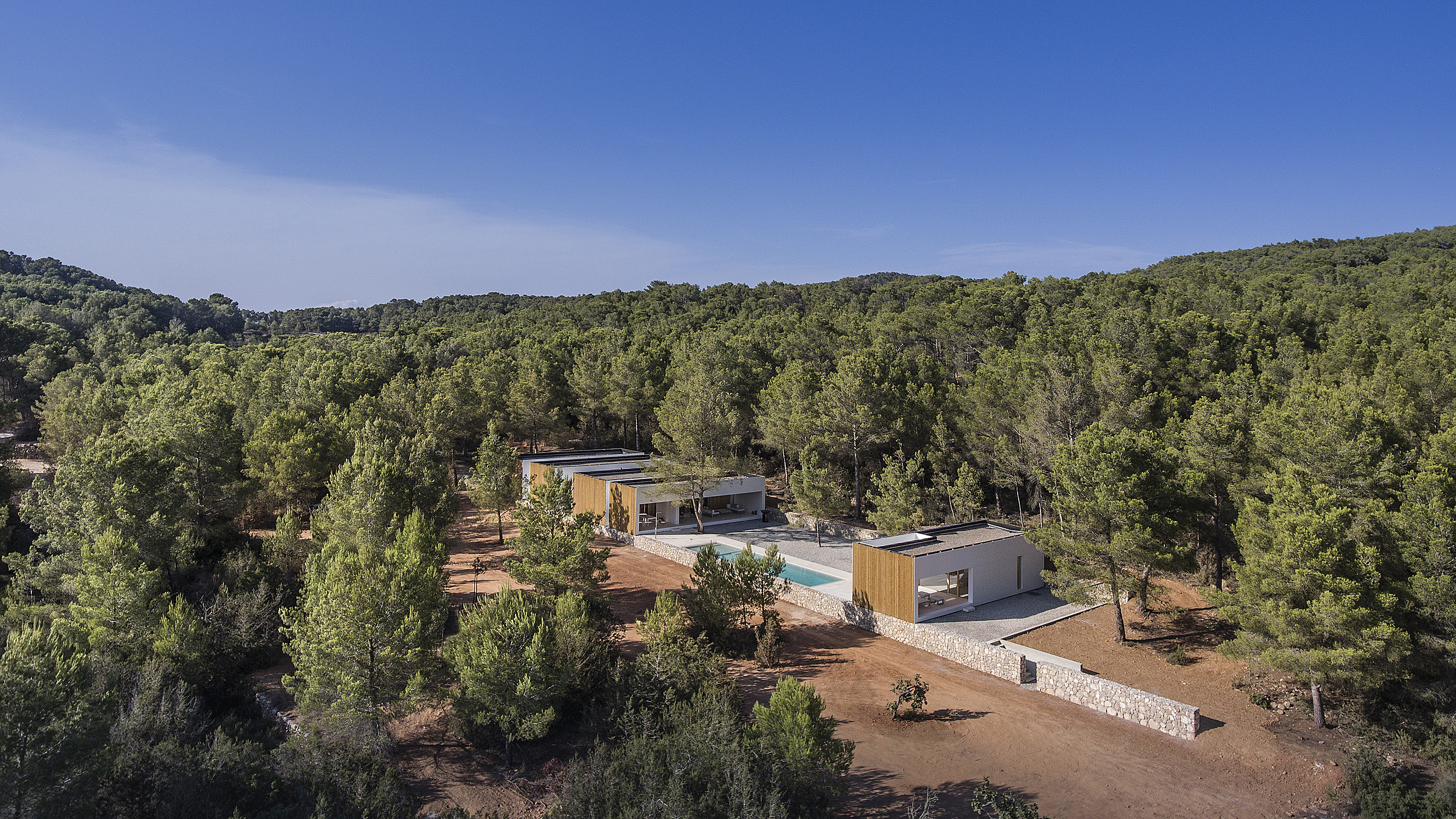
INFORMATION
m-ar.net
Receive our daily digest of inspiration, escapism and design stories from around the world direct to your inbox.
Harriet Thorpe is a writer, journalist and editor covering architecture, design and culture, with particular interest in sustainability, 20th-century architecture and community. After studying History of Art at the School of Oriental and African Studies (SOAS) and Journalism at City University in London, she developed her interest in architecture working at Wallpaper* magazine and today contributes to Wallpaper*, The World of Interiors and Icon magazine, amongst other titles. She is author of The Sustainable City (2022, Hoxton Mini Press), a book about sustainable architecture in London, and the Modern Cambridge Map (2023, Blue Crow Media), a map of 20th-century architecture in Cambridge, the city where she grew up.
-
 Click to buy: how will we buy watches in 2026?
Click to buy: how will we buy watches in 2026?Time was when a watch was bought only in a shop - the trying on was all part of the 'white glove' sales experience. But can the watch industry really put off the digital world any longer?
-
 Don't miss these art exhibitions to see in January
Don't miss these art exhibitions to see in JanuaryStart the year with an inspiring dose of culture - here are the best things to see in January
-
 Unmissable fashion exhibitions to add to your calendar in 2026
Unmissable fashion exhibitions to add to your calendar in 2026From a trip back to the 1990s at Tate Britain to retrospectives on Schiaparelli, Madame Grès and Vivienne Westwood, 2026 looks set to continue the renaissance of the fashion exhibition
-
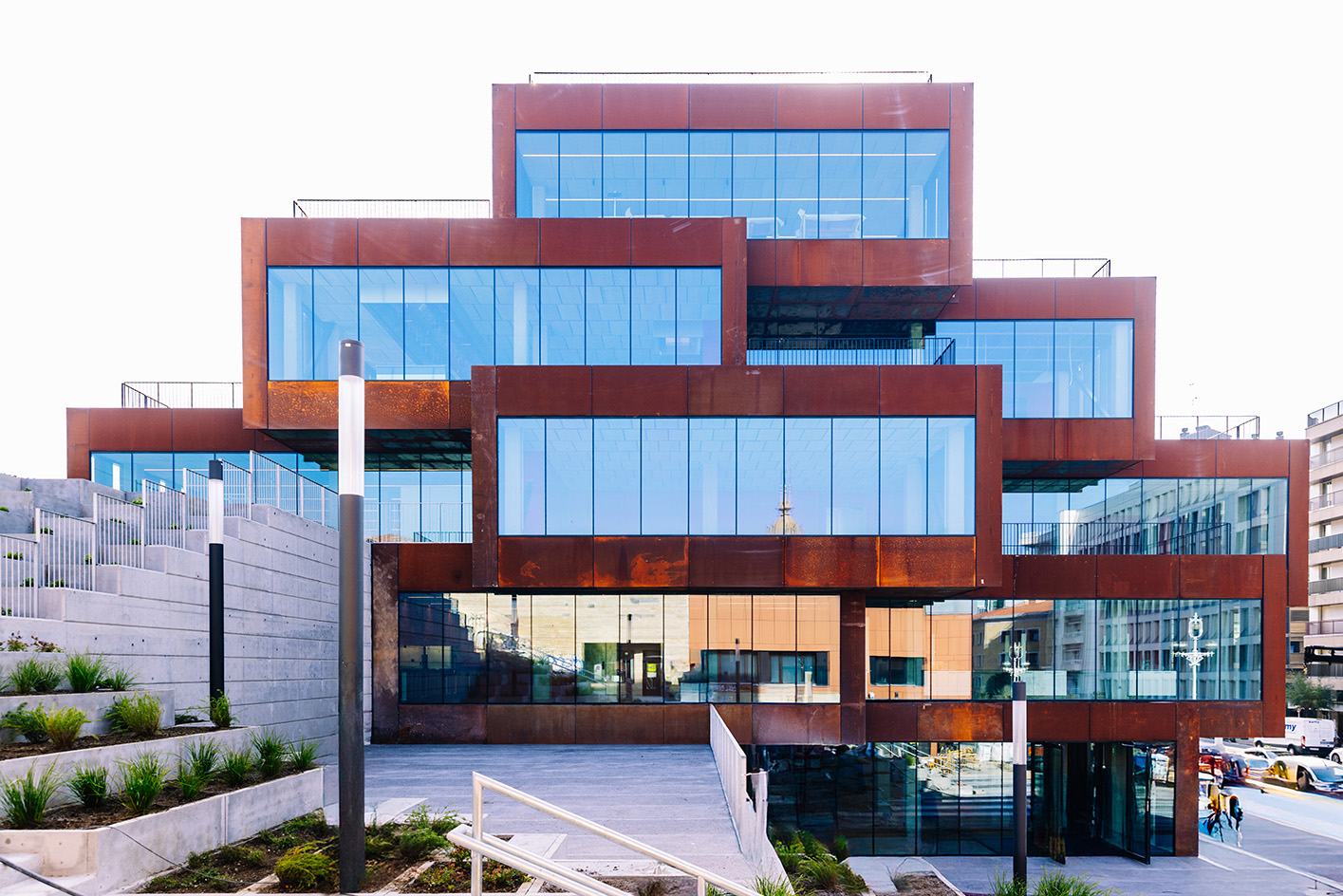 In the heart of Basque Country, Bjarke Ingels unveils a striking modular building devoted to culinary research
In the heart of Basque Country, Bjarke Ingels unveils a striking modular building devoted to culinary researchSee what the architect cooked up for the Basque Culinary Center in San Sebastián, Spain
-
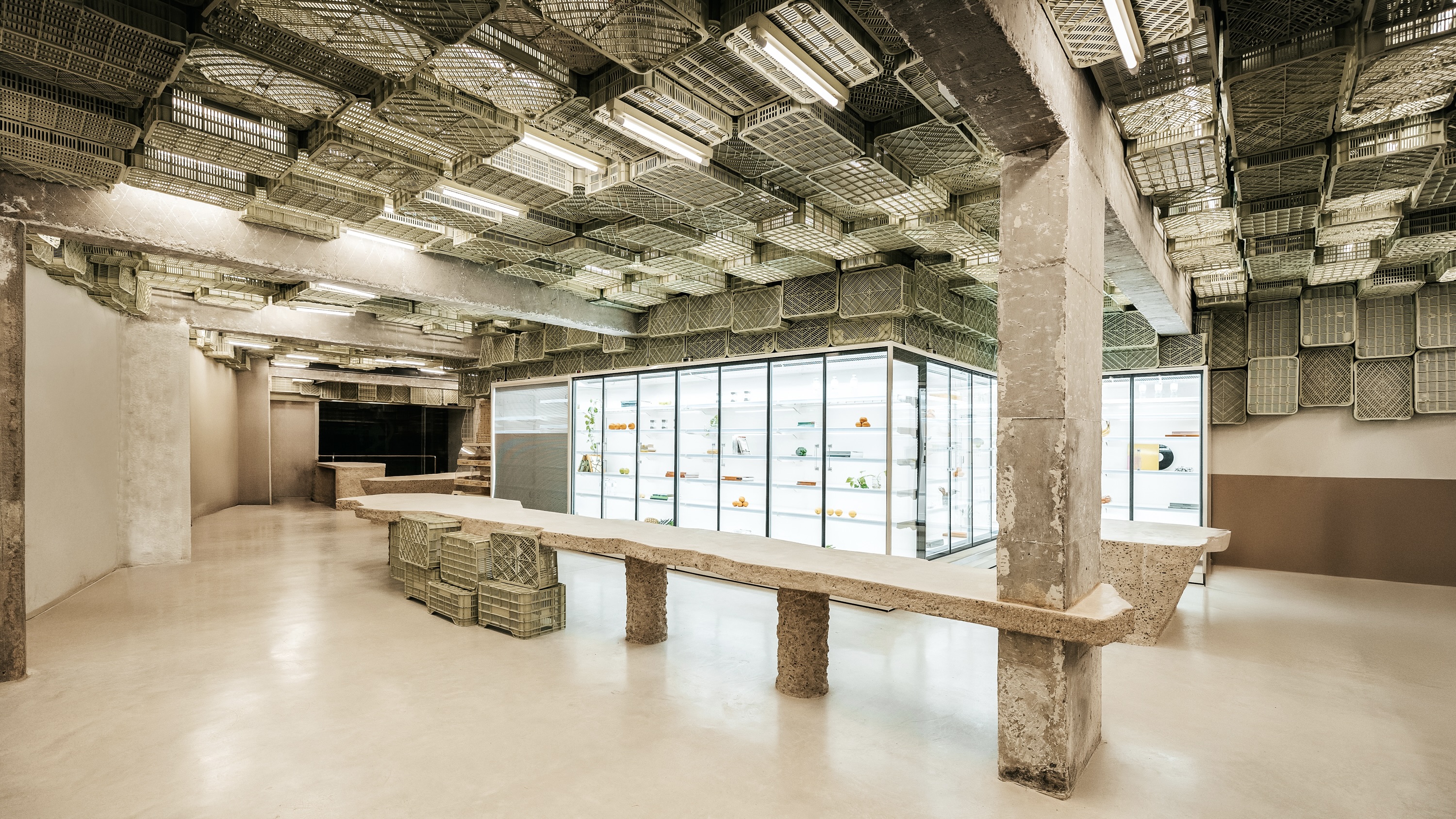 Spice up the weekly shop at Mallorca’s brutalist supermarket
Spice up the weekly shop at Mallorca’s brutalist supermarketIn this brutalist supermarket, through the use of raw concrete, monolithic forms and modular elements, designer Minimal Studio hints at a critique of consumer culture
-
 A Spanish house designed to ‘provide not just shelter, but a tangible, physical experience’
A Spanish house designed to ‘provide not just shelter, but a tangible, physical experience’A Spanish house outside Tarragona creates a tangible framework for the everyday life of a couple working flexibly in the digital world
-
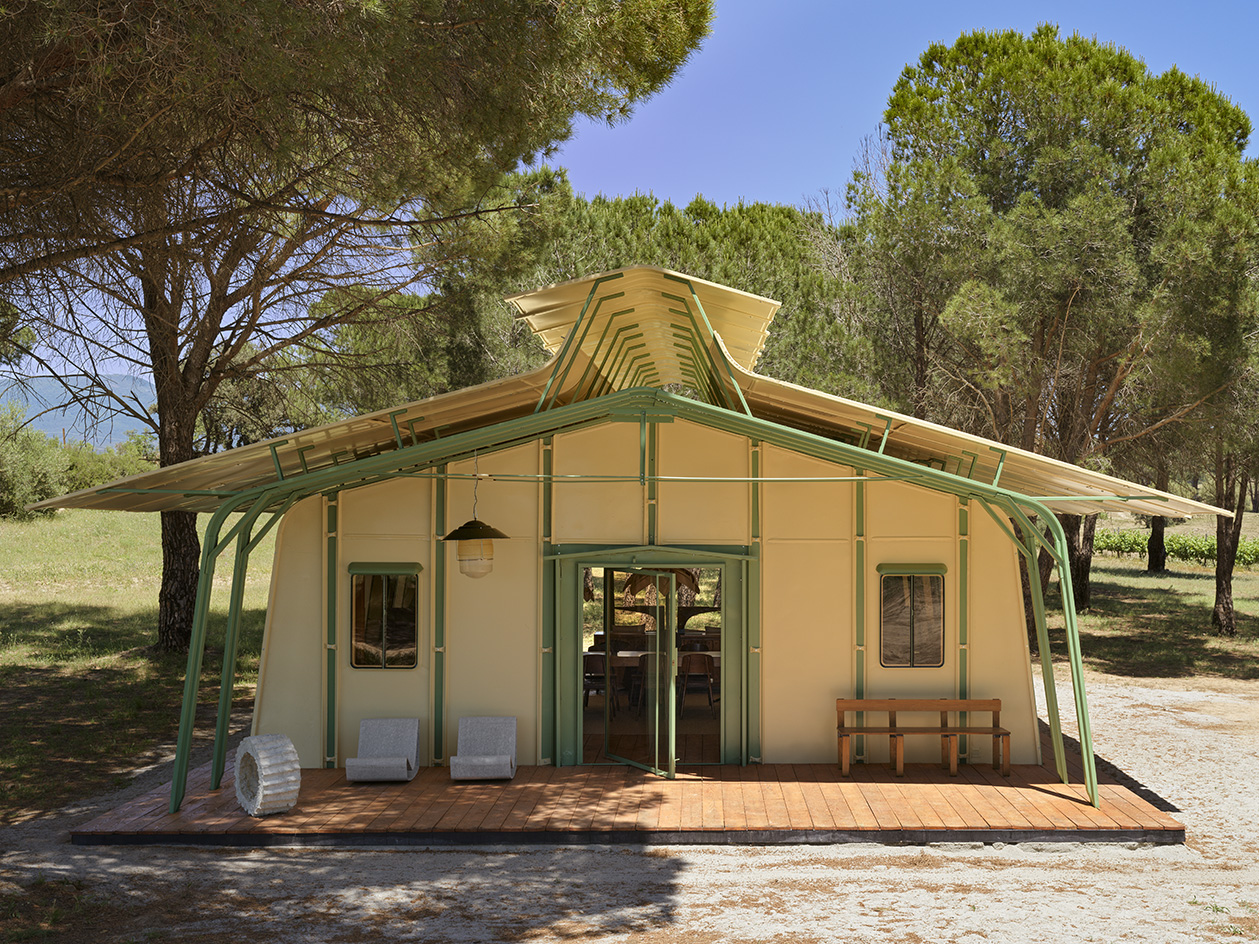 Meet Ferdinand Fillod, a forgotten pioneer of prefabricated architecture
Meet Ferdinand Fillod, a forgotten pioneer of prefabricated architectureHis clever flat-pack structures were 'a little like Ikea before its time.'
-
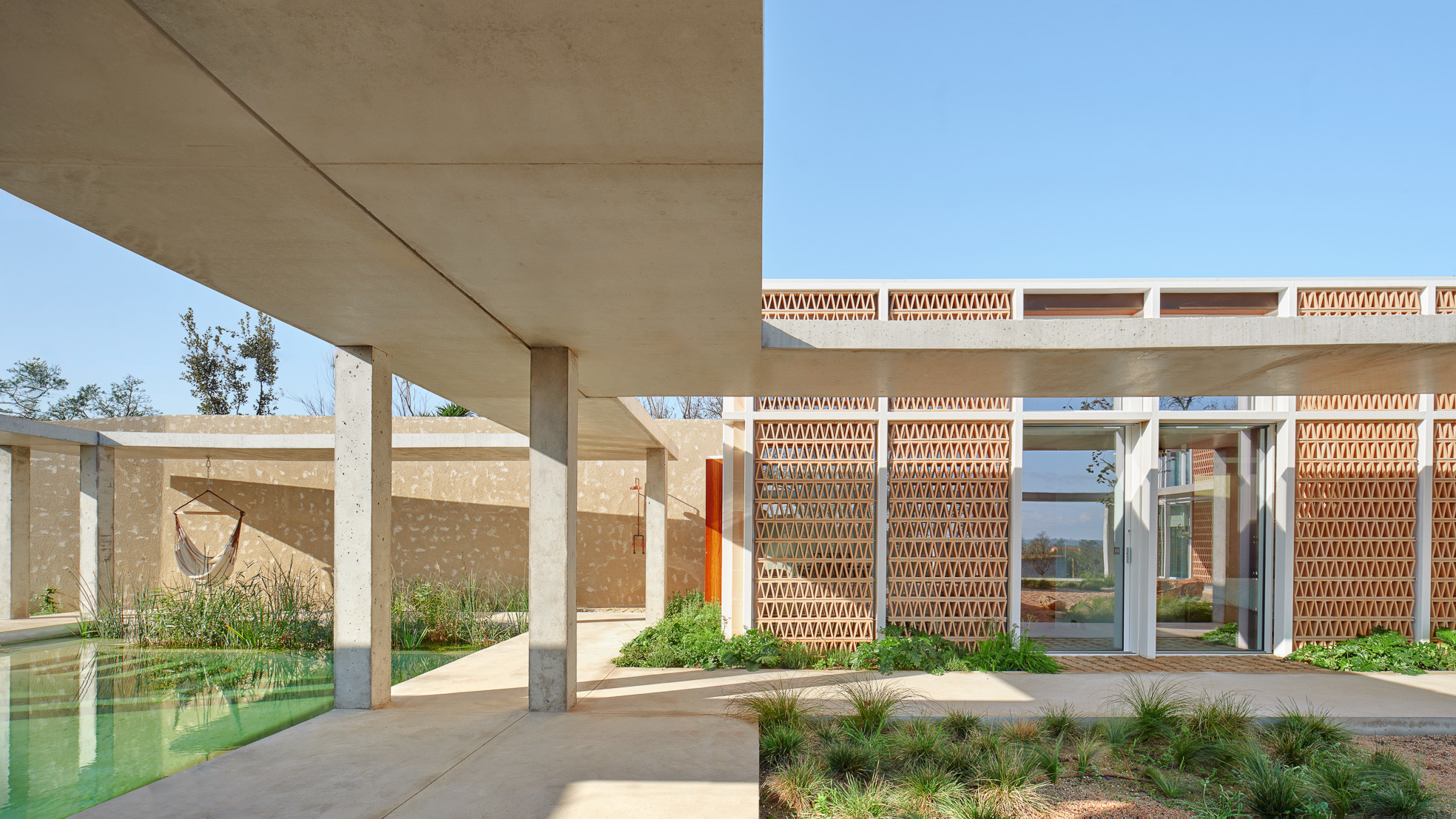 A courtyard house in northern Spain plays with classical influences and modernist forms
A courtyard house in northern Spain plays with classical influences and modernist formsA new courtyard house, Casa Tres Patis by Twobo Arquitectura, is a private complex that combines rich materiality and intriguing spatial alignments
-
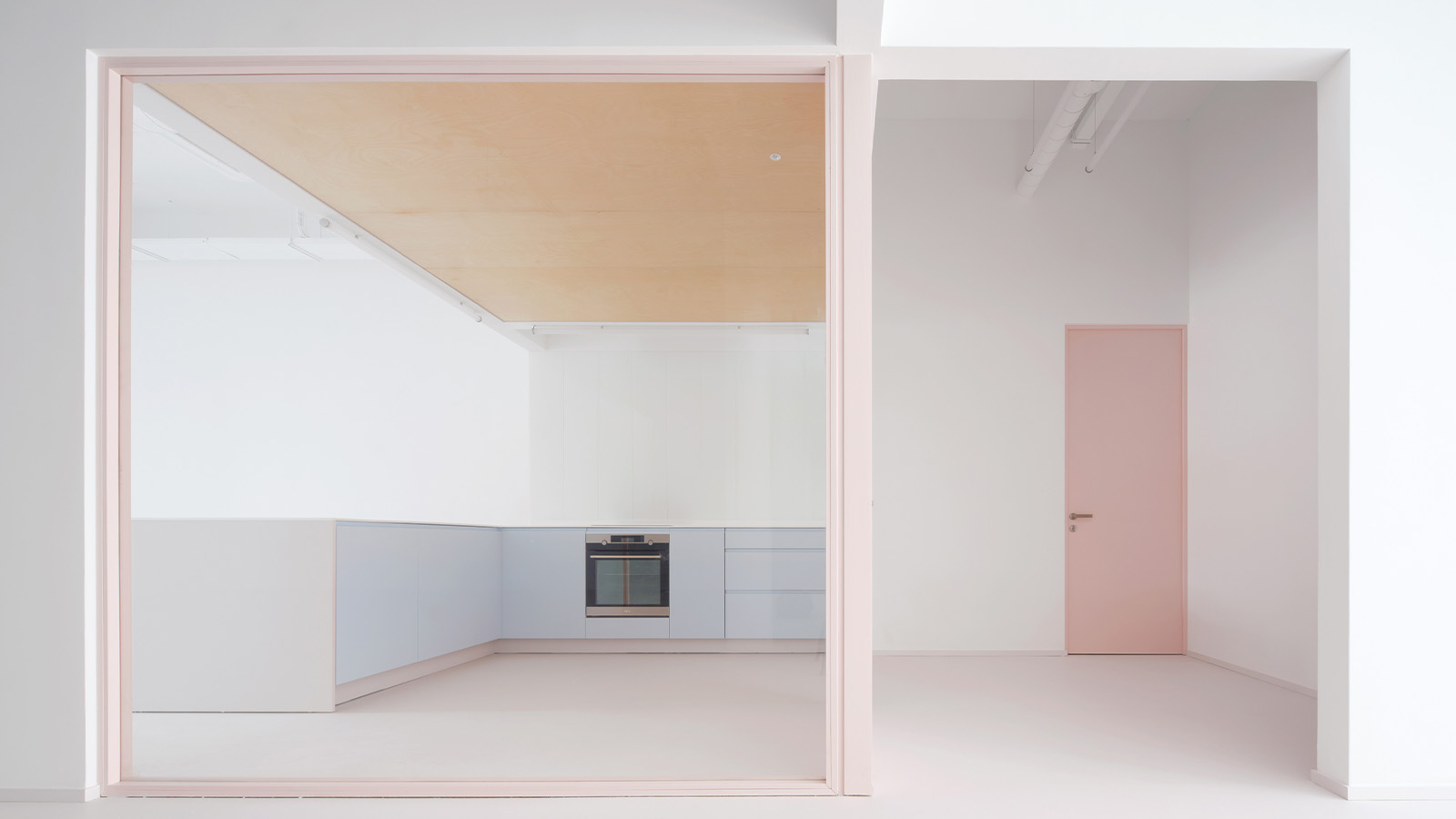 In Santander, a cotton candy-coloured HQ is a contemporary delight
In Santander, a cotton candy-coloured HQ is a contemporary delightSantander’s Colección ES Headquarters, a multifunctional space for art, office work, and hosting, underwent a refurbishment by Carbajo Hermanos, drawing inspiration from both travels and local context
-
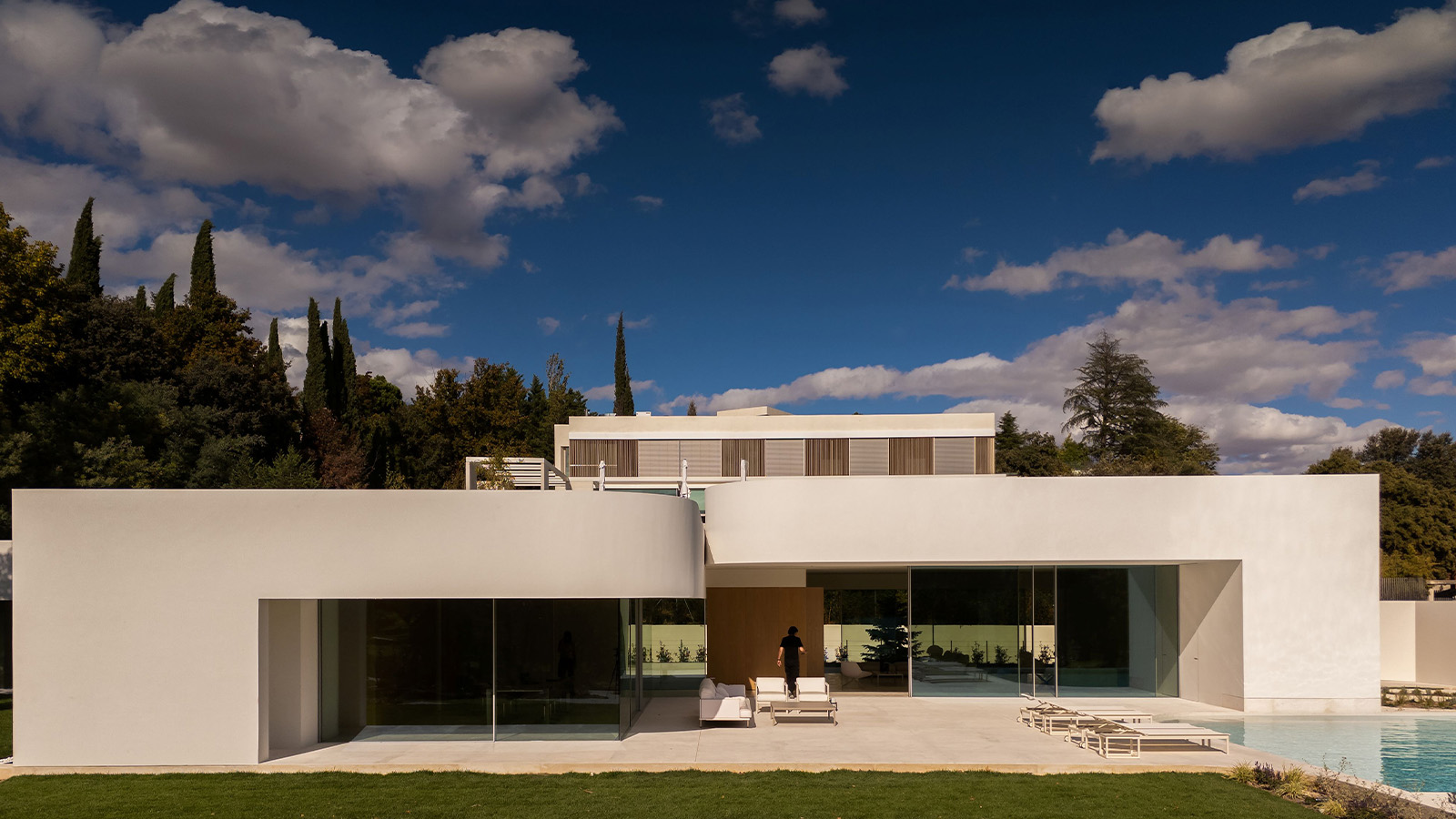 This Madrid villa’s sculptural details add to its serene appeal
This Madrid villa’s sculptural details add to its serene appealVilla 18 by Fran Silvestre Architects, one of a trilogy of new homes in La Moraleja, plays with geometry and curves – take a tour
-
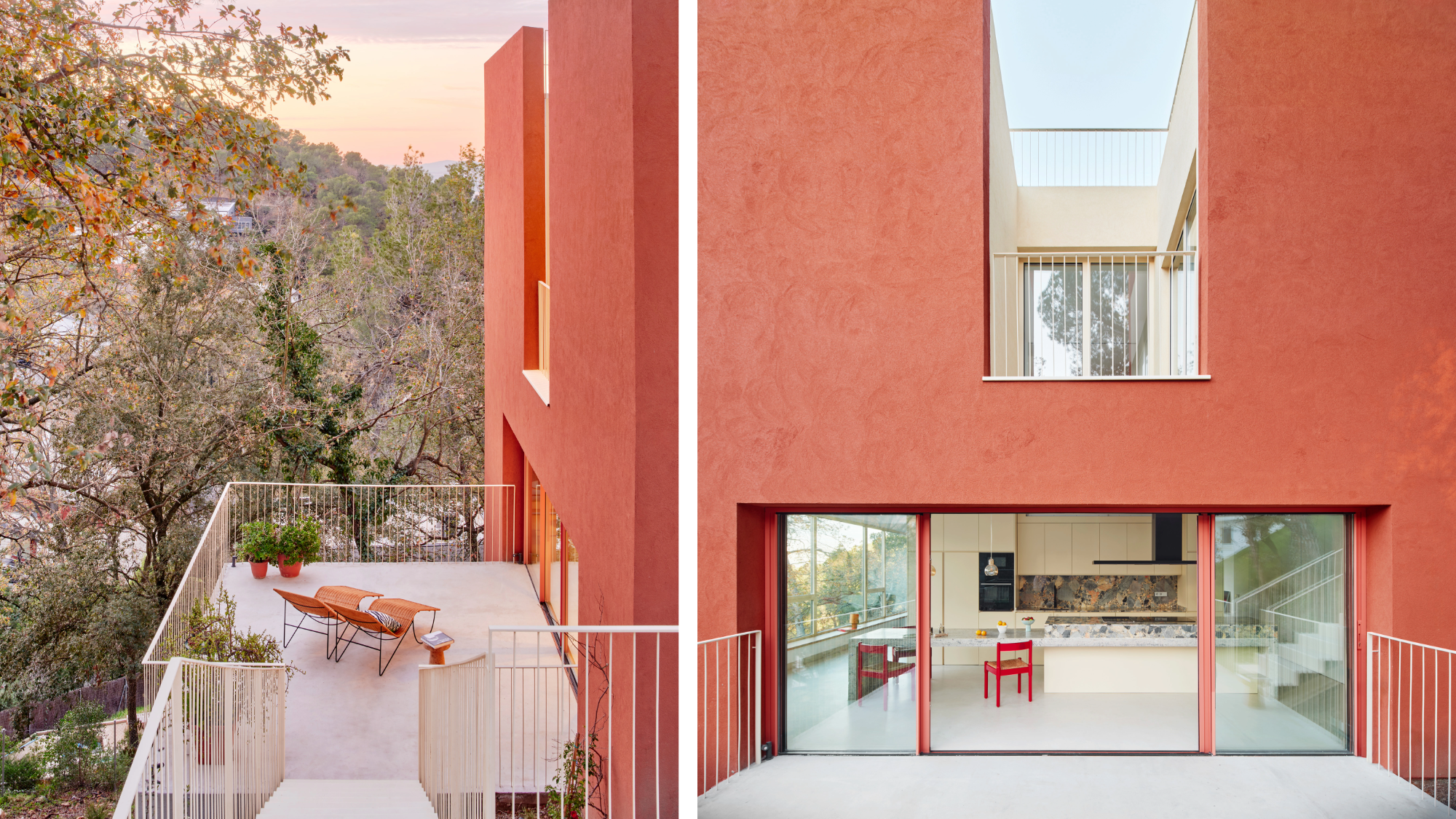 This striking Spanish house makes the most of a tricky plot in a good area
This striking Spanish house makes the most of a tricky plot in a good areaA Spanish house perched on a steep slope in the leafy suburbs of Barcelona, Raúl Sánchez Architects’ Casa Magarola features colourful details, vintage designs and hidden balconies